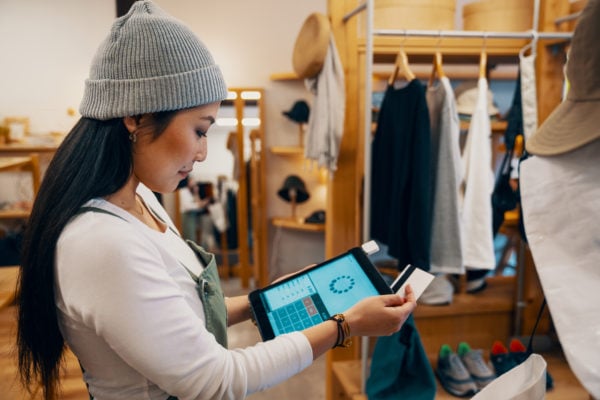What’s Happening to Retail as Physical And Online Stores Collide?

In a strange reversal of fortune, the very entity that has made online shopping mainstream continues to expand its own physical storefronts with the launch of brick-and-mortar department stores. Amazon, which has opened smaller specialty stores for books, groceries and its four-star items in recent years, announced in August 2021 the launch of 30,000 square foot retail spaces that will sell a variety of clothing, household items and electronics.
What happened to the “death of brick and mortar?” Moves such as Amazon’s have left many scratching their heads and rethinking the trajectory of physical retail outlets moving forward.
The Most Digital Generation Likes In-Store Shopping
In a survey of 1,500 U.S. and Canadian consumers, representing four generations of shoppers, the Kearney Consumer Institute (KCI) found 81% of Gen Z consumers (those born between 1995 to 2010) like to purchase products in-store. Nearly three out of four (74%) Gen Z shoppers said a “well curated store experience focused on a limited number of products” was important. They expressed how shopping is a way for them to “disconnect” from the omnipresent world of social media.
As consumers hunger for in-person shopping experiences to combat the stressors and boredom of an increasingly online world, the world’s largest retailers are responding with innovative approaches to blur the lines between e-commerce and physical retail store experiences.
Hybrid Approaches To Retail Emerge
This latest Amazon announcement is just one element of a larger trend evolving in the retail sector. Both online and physical retailers have been embarking on hybrid ventures to attract cross-sections of the consumer population.
Kohl’s is one example of a company leading this trend with its Sephora store-in-a-store approach and partnership with Amazon to accept the online retailers’ returns in Kohl’s physical retail locations. It’s a creative way to attract consumers who might not otherwise shop your brand. While they’re in your store purchasing makeup or returning an Amazon package, they might just take the time to check out what you offer, sign up for a loyalty account and come back again.
The nation’s largest retailer, Walmart, has been keeping pace with hybrid online/physical retail trends by launching its Walmart Fulfillment Services (WFS) in 2020. Third-party retailers on Walmart’s Marketplace can leverage the retail giant’s fulfillment network to store, pick, pack and ship items to customers and manage returns. Similar to the Amazon/Kohl’s approach, purchases made from Walmart Marketplace partners can now be returned to Walmart stores, presenting a way for the retailer to reach previously untapped consumer audiences.
Pop-Ups Leverage Brand Synergies
Pop-up shops are another evolution in the retail space and a way for online retailers to present products physically to customers, if only temporarily.
Through its New York City flagship’s rotating pop-up shop, Center Stage, Nordstrom has been hosting products from luxury brands including Golden Goose, Free People, Cross Colors and Valentino Beauty throughout 2021. In a West-meets-East Coast collaboration, Los Angeles-based apparel retailer Revolve Group set up a pop-up shop during New York Fashion Week in late August 2021, featuring products from 13 designers.
This cross-promotional approach can bring little-known brands to an audience of consumers that have been proven to purchase similar items in terms of design and cost. And perhaps it’s a way for brands to appeal to the consumer desire to physically experience merchandise, while at the same time, keep fresh with an ever-changing variety of goods.
Where does this all go from here?
It’s an exciting time in retail, but also one full of unknowns for companies. Is the movement toward a greater physical presence one that will carry into the future, or is it a passing trend that will give way to some new way of doing business?
Leading U.S. retailers are making significant investments in the infrastructure required to support both physical and online shopping experiences, as evidenced by Amazon’s department store launch. Will this gamble pay off?
One thing that’s clear is retailers are no longer afforded the luxury of having multiple disconnected channel strategies; they need to reorient themselves towards a unified customer-centric strategy. Such a strategy should not bifurcate experiences between the physical and digital worlds, but rather employ all the tools at their disposal to harmonize those channels and allow retailers to fulfill customer demands more fluidly. Seeing Amazon expand its brick and mortar is another reminder that even the grandfather of digital commerce understands this reality.
My advice to retailers is to build flexibility and resiliency into their order, inventory and transportation management processes. That way, they can seamlessly shift direction to meet changing consumer desires and demands. Customers can choose how, where and when they shop, while retailers continue to optimize channels to minimize costs and impacts to their supply chains.




